The largest new addition to the American fleet over the last decade has been the two classes of Littoral Combat Ship. The LCS was trumpeted as a revolutionary new platform that would greatly enhance American capability in coastal waters, but which has proved intensely controversial both during development and in service.
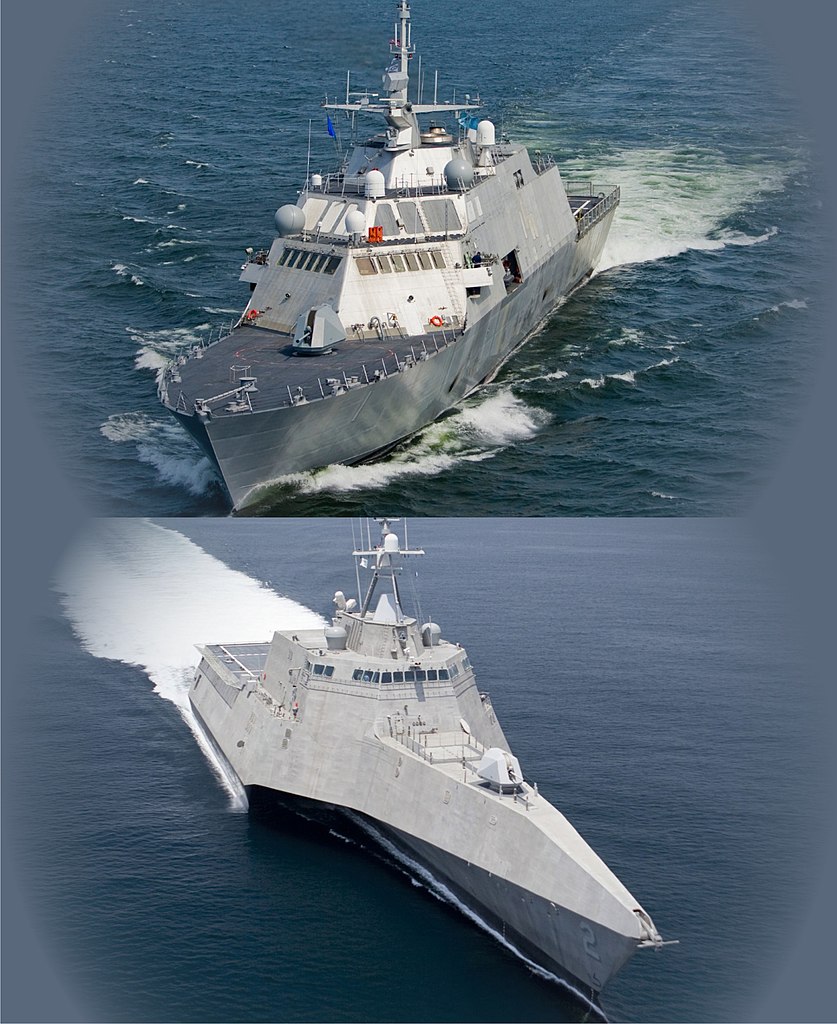
LCS-1 Freedom (top) and LCS-2 Independence
The LCS originated in the 1990s, as the USN struggled to find missions in the aftermath of the Cold War. The first result was a destroyer dedicated to the land-attack mission, which eventually became the Zumwalt class destroyers. But this was obviously going to be a large and expensive ship, and various officers were quick to propose a smaller, cheaper alternative. The most prominent was Arthur Cebrowski, president of the Naval War College, who proposed a concept called Streetfighter in a 1999 Proceedings article. Streetfighter would be small, fast, and thanks to a complex of buzzwords would be able to enter the enemy's coastal waters, which were too dangerous for bigger ships. Exactly how this would be done was not entirely clear, nor was what "Streetfighter" itself would look like.

Arthur Cebrowski
By itself, this wouldn't have been a huge deal. It's far from the craziest thing someone has proposed in Proceedings, and most pass into obscurity pretty quickly. Unfortunately, in 2001, Donald Rumsfeld became Secretary of Defense, with a commitment to transformation of the US military for the 21st century, and Cebrowski was made director of the Office of Force Transformation, giving him the opportunity to implement his ideas. To make matters worse, Transformation quickly turned from "question how we do things" (which is perfectly reasonable) to "we must do things differently". But many things (like having reliable engines) are done the way they are for good reason, as the resulting program would show.
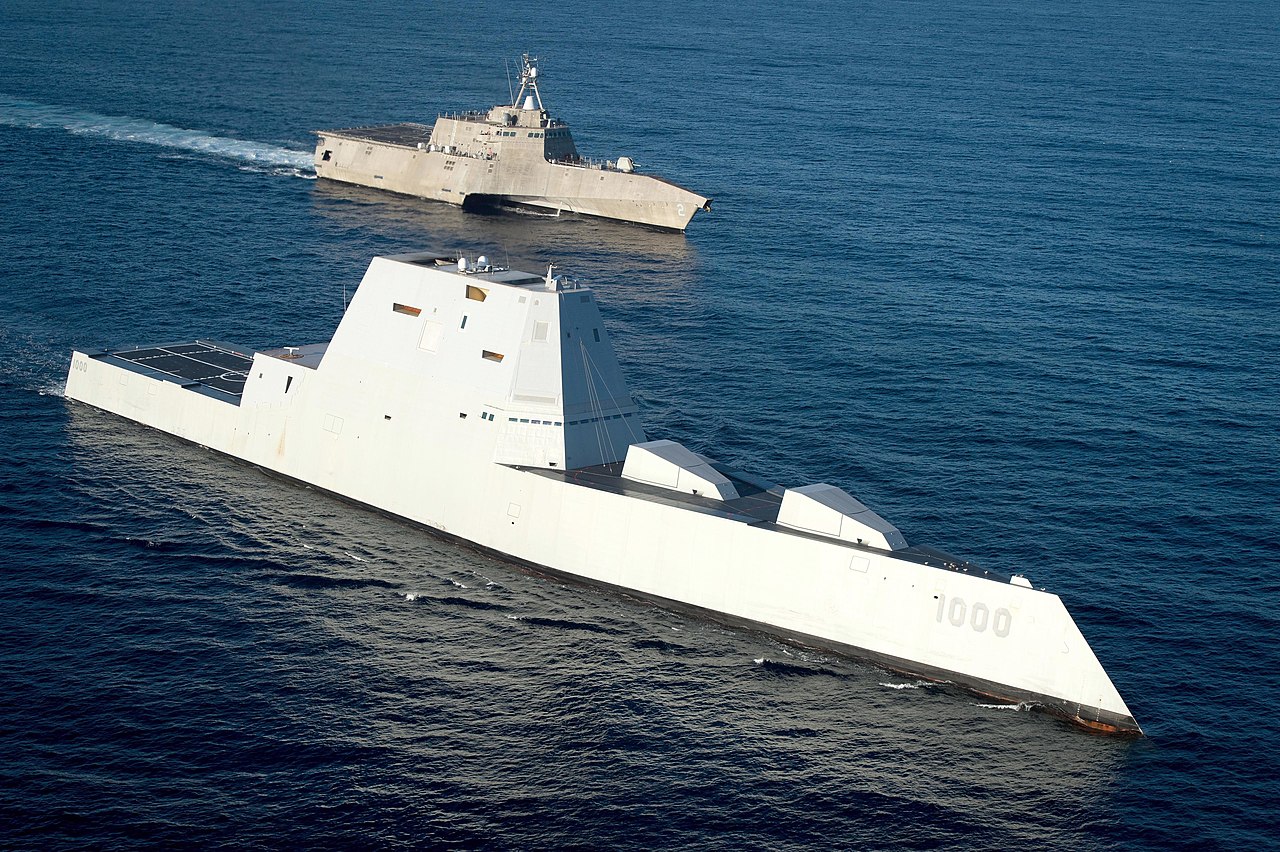
Zumwalt operates with Independence
One of the many traditional things discarded in the rush to be Transformational was having sensible requirements. Some wanted something like a corvette or fast-attack craft, optimized for coastal fighting and capable of high speed. Others wished for a modular vessel in the model pioneered by the Danish Navy, which could allow the ships to serve multiple roles by changing out payloads. And there were those who pointed out that a helicopter was absolutely vital to the effectiveness of a warship operating away from land-based air cover, so it definitely needed one of those, and should probably be more like a frigate. Instead of picking one of these options, all of them were mashed into one program, including a speed requirement of 40 kts, with a goal of 50. That may have been due to a belief that it would be important in coastal warfare, or to allow the ship to return quickly to a forward base and swap out modules, for instance exchanging anti-ship missiles for minehunting gear, then get back in the fight with a minimum of delay. It would also incorporate new features similar to those on the Zumwalt class, including a stealthy design and minimal manning.
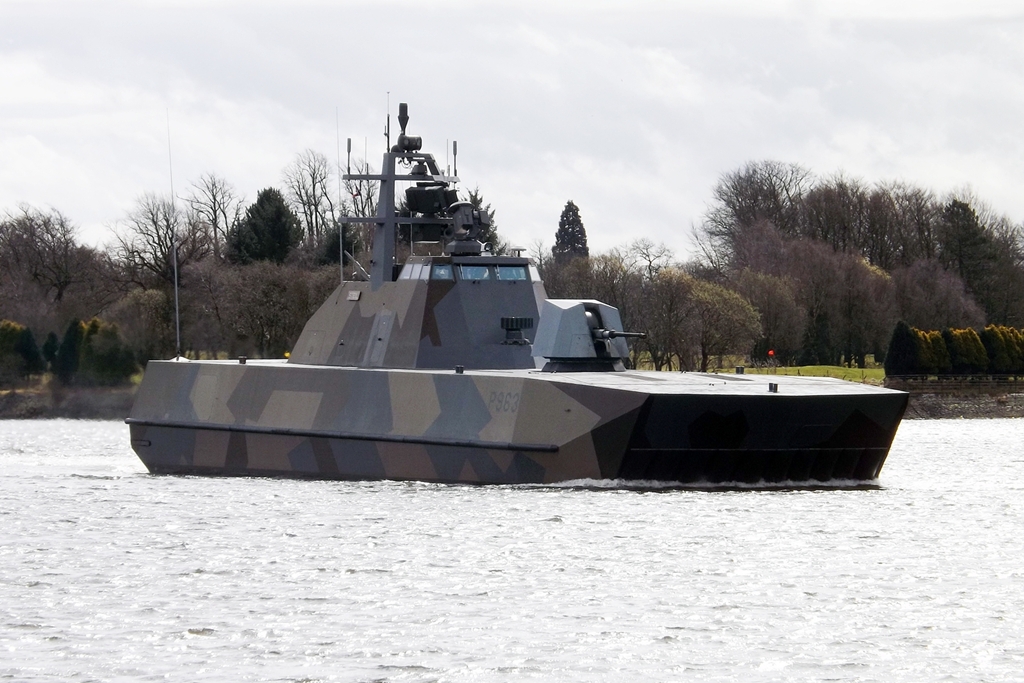
A Skjold class missile boat
Six teams submitted early designs, and three were selected for further work: General Dynamics-Bath Iron Works, with a trimaran based on a high-speed ferry, Lockheed Martin, with a semi-planing monohull, and Raytheon, with a design based on a scaled-up version of the Norwegian Skjold class surface effect ship. In 2004, the Raytheon design was eliminated, and the decision was made to buy two ships from each of the two remaining teams for competitive trials before a single design was selected for series procurement, with the total program expected to reach 55 or 60 ships. The GD/Bath vessels would be built by Austal USA at their yard in Mobile, Alabama, while the Lockheed ships were assigned to Marinette Marine in Marinette, Wisconsin.1
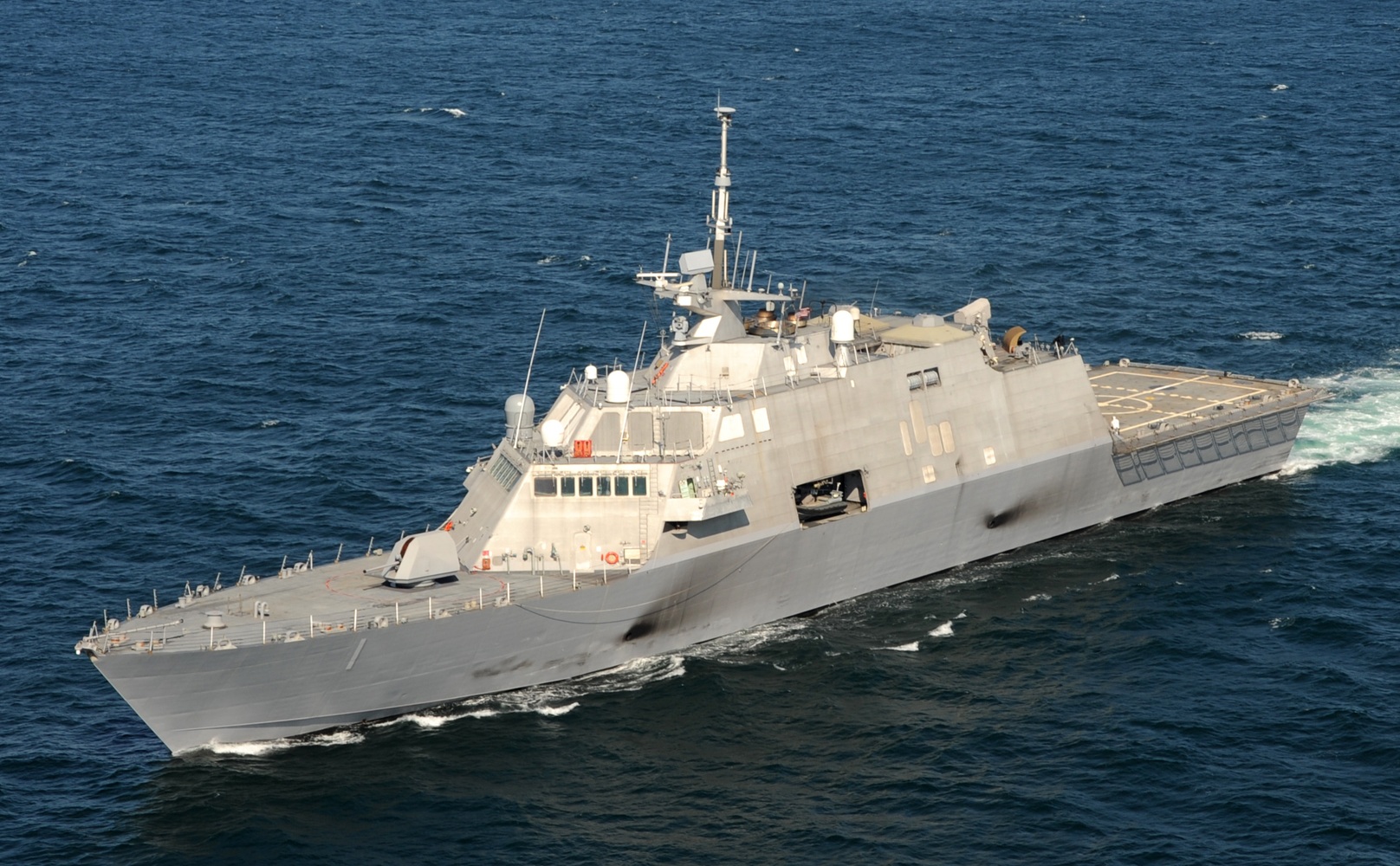
Freedom
As might be expected from such a well-thought-out program, things began to go wrong almost immediately. First, while Streetfighter had been sold as something under 1,000 tons,2 fitting all of the promised capabilities in actually required the ships to displace around 3,000 tons. To make matters worse, costs began to grow out of control. When the program started, the total cost for the 60-ship buy, including the seaframes,3 the mission modules, and the development that went into them, was estimated at $20 billion in constant 2005 dollars, which comes out to around $450 million for each ship in 2021 dollars. This was quickly breached. The 2005 target for each seaframe from the fifth ship on was $220 million,4 but by 2008 the Congressional cost cap had to be raised to $460 million per ship for the follow-on vessels. Congress wasn't happy about any of this and the initial contracts for LSC-3 and LCS-4 were cancelled, but the program somehow survived, with new contracts for the third and fourth ships being issued in FY09. In 2011, it was estimated that the cost of procuring the 55 ships without mission modules would be around $32.6 billion in FY2005 dollars. Eventually things settled down, and the last few ships (procured in FY19) seem to have cost somewhere around $550 million each.
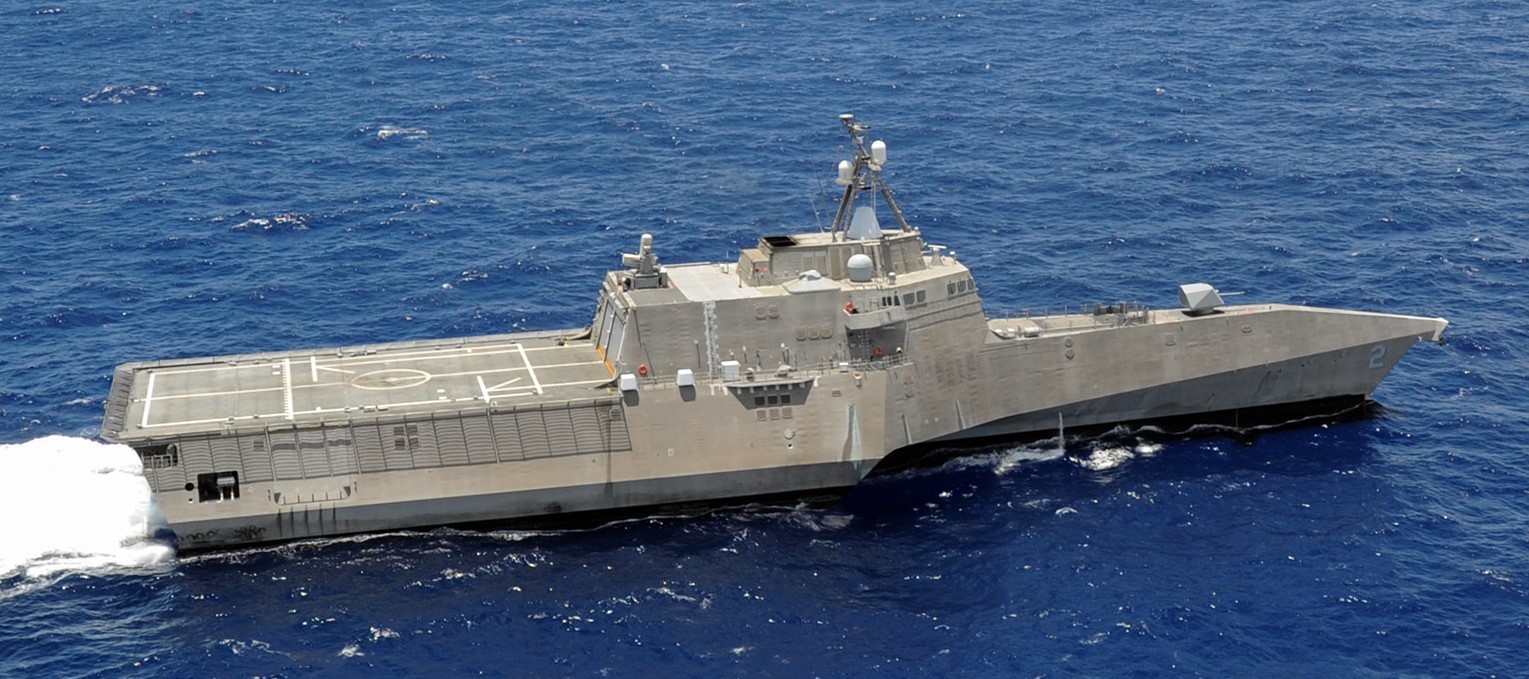
Independence
In 2010, the Navy made another major change to the program. Instead of down-selecting to one design as it had planned, a mix of both designs would be procured. In theory, this was because both teams had gotten their design under the price cap, although it's hard to ignore the suspicion that keeping interested Congressional delegations happy had more to do with it. The first 32 ships were split evenly between the Lockheed design (LCS-1/Freedom class) and the GD/Austal design (LCS-2/Independence class), with the last three orders going solely to Austal before the program was terminated in favor of the FFG(X).
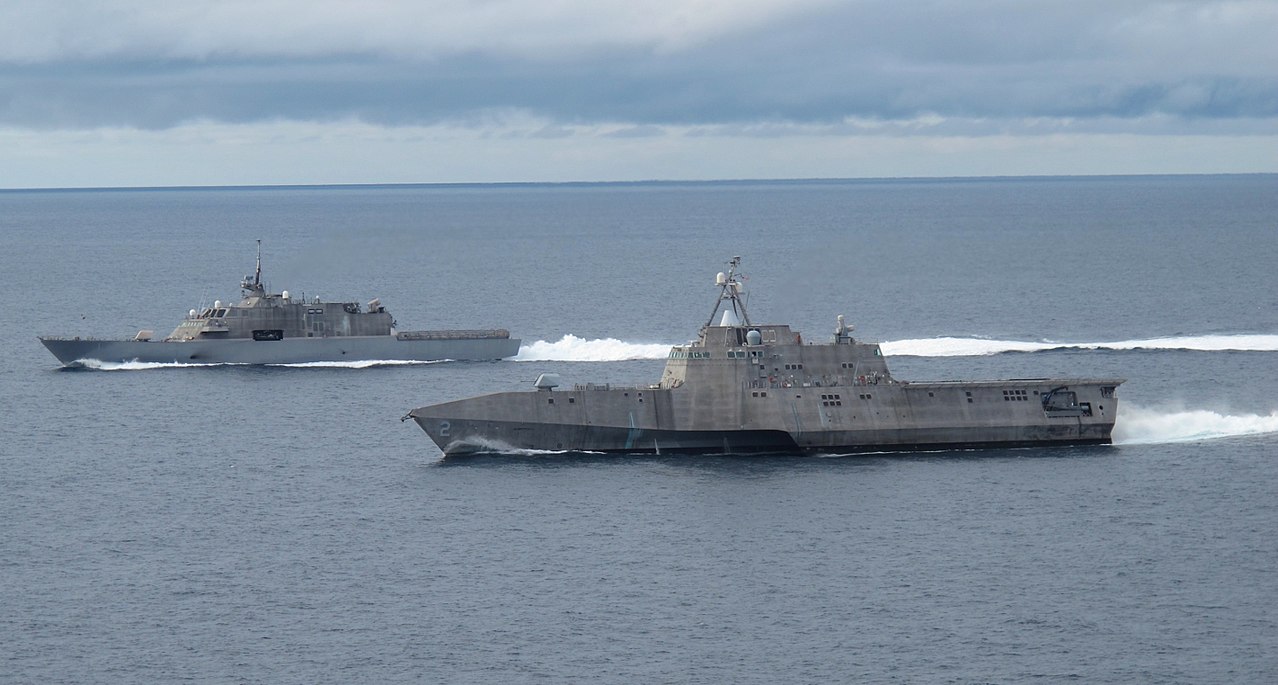
Freedom and Independence operate together
But cost overruns are hardly unique to the LCS, and many defense programs that have struggled in their early years have gone on to be standout successes. Next time, we'll take a close look at the results, and figure out if this is the case with the LCS.
1 Yes, Wisconsin is inland. Marinette is on Lake Michigan, and the ships run early trials there before going down the St. Lawrence Seaway to the Atlantic. ⇑
2 Cebrowski and his co-conspirator Wayne Hughes seem to have avoided actually giving numbers, but several sources from the early 2000s point to Streetfighter as being 500-1000 tons. ⇑
3 The Transformational term for the basic ships sans mission modules. ⇑
4 This was clearly unrealistic from the start. The CBO pointed out that in broad terms, the first ship of a class of new surface warships tends to cost around $250 million/1,000 tons (2009 dollars). The LCS was slightly over this, but not by a huge amount. ⇑

Comments
....The mission modules, IMHO, were yet another gift from the Good Idea Fairy(TM). There was never any possibility that they could have been swapped out in anything less than a full shipyard, and it probably would have taken longer to do so than any likely conflict would have lasted - not to mention that no one seems to have realized how far down shipyard repair capability has slipped. In a full-throttle shooting war, the yards would have been busy trying to rebuild far higher-value units than the LCS', not swap out weapons systems.
One wonders if they might not have been better off getting dedicated variants - LCS(M) for mine warfare, LCS(A) anti-air, LCS(G) missile strike, and LCS(S) for ASW.
Mike
From your recent articles, I get the impression, that the fatal flaw in the modern Pentagon is the inability to meaningfully set priorities.
@Mike
I go into more detail on this in later parts. I wouldn't go quite that far, but I definitely don't think it was handled well.
I feel like the modular design was a good idea, but oversold. You couldn't just drop mission boxes in like Thunderbird 2 for the disaster of the week, if only because your crew would have to be trained on everything.
But missions change and technology evolves, so having a clearly defined "open architecture" space in a ship would make periodic refits of mission gear much easier (no routing jet fuel pipes through the head like on Iowa!). Updates to rapidly developing tech like drones get much easier.
You also have more flexibility responding to mission changes without building new hulls. Just start gradually swapping modules out as frigates come in for refits, until you have the right balance. Need more anti-piracy patrols over the next five years? Add fire scouts and more heli maintenance capacity.
Foreigners discover oil within tomahawk range? Give more ships Democracy delivery packages!
Threat of a peer-level conflict heating up? ...pack on all the tactical VLS cells you can and pray.
Who know whether that's actually cheaper than just building multi-role ships. But if you're set on small ships with small crews, it's probably the way to go.
@echo
Pretty much, yes. There's definitely a lot of value in having an open architecture, and in building a hull that has flexibility to do multiple missions. That's what the Danish did with StanFlex, and I'm a big fan. But the LCS took it a bit too far, and paid the price.
echo:
The only argument against I can think of is that if you aren't planning on having the ship for long (say because there's a war on) the extra space for upgradeability may be better used for more weapons but even then I suspect that's a bad idea, if only because technology tends to change very quickly in serious wars.
echo:
That's one way to cast a postal vote.
echo:
For a given cost I suspect less but more capable ships to be better, assuming of course that you still have enough ships to do the jobs you need done.
One might cynically suggest that there are times when you need X many ships of Y capability "on the books" as it were, for political reasons. But you can't afford them in addition to the ones you actually need in real life.
Use your "modularity" concept to give yourself a bunch of what you actually want, but you can point to the "but we can swap in the Kaiju defense module whenever it's needed, Senator".
Oh dear, the US military has ended up with yet another Eierlegende Wollmilchsau: https://www.dw.com/en/eierlegende-wollmilchsau/a-6616972
I propose that the caption on the first image be revised to: "The Great White-Elephant Fleet: Zumwalt Sails With Independence"
Whoops, I meant third image, not first.
I actually like the Independence class for reasons to be discussed, although that's a really good caption.
there were a lot of theoretically good ideas in the LCS, the trouble is they were all implemented in the dumbest ways possible.
@bean
I'm guessing that a major point in its favour is the huge (relatively speaking) flight deck?
@cassander
Yeah, pretty much. Along with a few genuinely dumb ideas.
@Alexander
That's the big one. I suspect it may have also done future naval architects a great service by pioneering the trimaran hull form in operational ships.
There's something to be said for maintaining dissimilar redundancy, something NASA's been getting an object lesson in over the commercial crew program.
Hmm... Given the mess that their engineering has been, this makes a warped kind of sense, and might even explain the dissimilar engineering plants. But naval design lives less close to the edge than does aerospace, and I'm still going to go with "didn't want to get into a fight with the losing Congressional delegation".
I entirely expect it to have been politicking and mainly thought of the redundancy aspect as a probably unintentional benefit. On the "lives less close to the edge" front, we're redoing things that have been done before. The Starliner issues have been sloppy development practices, failing at a task practically every satellite has done successfully (get data from the booster using a published standard).
It kind of sounds like the modules development is in a similar bucket - nothing involved is bleeding edge, but they all found ways to fail to meet requirements.
Not only is StanFlex modularization done right, but I've long thought that the Danish "Absalon" class frigate would was a littoral combat ship done right and it would have been appropriate to fire the admirals and contractors involved in the LCS and just buy a couple of those from Denmark to try out.
There'd be things I'd want changed, like an elevator to allow the flex deck to be used for additional helicopter/UAV support, but I have a hard time seeing any LCS mission that even a stock Absalon couldn't do better and cheaper. Plus things that aren't part of the LCS mission set but still need doing, like disaster relief and ocean escort. It can't do 40 knots, obviously, but I'd wager it could sustain 24 knots longer and in higher seas than either of the LCS classes.
John, please stop reading things before they go up and stealing my ideas.
But more seriously, yes. The other design I would single out as making more sense in the LCS slot is the Type 31, which is also based on a Danish design. Hmm....
Isn't the Type 31 just a cheapened Type 26?
@Anonymous
Not really, it's based on a different hull (as bean says, the Danish Iver Huitfeldt), and has very little ASW capability, where as the Type 26 is pretty specialised for the role. The Type 31 would really benefit from the 5" gun and the more flexible Mk41 VLS of the Type 26, but economising on the soundproofing and sonar seems reasonable. Hopefully the follow on Type 32s will be a bit more like the Absalons John mentioned (another Danish design closely related to the Iver Huitfeldt).
I'll put in my regular promotion of the Kalaat Beni Abbes as what the LCS should have been. It is significantly larger and slower, with far more space for helicopters, boats or even tanks, and has a superior, but not excessive, armament.
I'd describe the Type 31 as the "minimum viable warship" for the modern world. It's survivable enough to be able to deploy in places like the Horn of Africa, where there's a small missile threat, and it's got a gun and a helicopter. Think of it as the equivalent of the Victorian gunboats you'd send to deal with minor issues. There are times that's all you need, and buying something like that for the US would make a lot of sense.
That's a small LPD. Yes, steel is cheap and air is free, but when being a landing ship is nowhere in the spec and you're doubling the size of the ship, there's not much point. Also, it has no hangar, which is not OK anywhere outside of the Med.
I'm pretty sure it has a hanger, at least in the sense that a Wasp or equivalent has one. It's smaller, and so is the lift, but you can get your helicopters below deck.
I looked into this more, and I'm genuinely not sure. Some sources claim there's a hangar, but they're all pretty vague about it, and I don't think the ship is big enough for that. She's actually smaller than a Burke, and vertical hangars on ships of that type are usually one-chopper affairs where the flight deck drops down. I managed to find one diagram which suggests that they do have an elevator amidships, but they must be storing the helos on the same deck where they keep vehicles. Also, the elevator looks to be tiny, and I strongly suspect that it's more intended to bring vehicles up than helicopters down. The whole design reeks of a tiny LPD designed for Mediterranean service, and picked by Algeria and Qatar because it looks cool.
There is definitely only one hanger/vehicle deck, and the lift is small, but I was making the assumption that it is usable for helicopters. If not (and it couldn't be rectified) that'd be a major flaw, and I'd agree that the vehicle deck was unnecessarily large. You could also have a point about the accommodation being excessive too, but unmanned systems require a surprising number of personnel, and you might fit fewer people on board with western accommodation standards.
This seems to imply that Lynx (but not Merlin?) can be recovered to the hanger/vehicle deck.
https://www.fincantieri.com/en/products-and-services/naval-vessels/enhanced-san-giusto-class
This says five medium helicopters can fit in the hanger. I'm not sure if we'd consider Lynx 'small' and Merlin 'medium', or if Merlin would be too large for the hanger?
https://www.defenceweb.co.za/sea/sea-sea/kalaat-beni-abbes-arrives-in-algeria/
Apologies for spamming you with all these posts. This link suggests that Qatar is ordering a related vessel able to accommodate the NH90 in its hanger, but will require modification of the lift to allow this. That would mean that Merlin must be too big for the lift on the Algerian vessel.
https://www.thedrive.com/the-war-zone/19394/qatar-is-getting-this-unique-amphibious-mother-ship-and-radar-picket-vessel-mash-up
That last link was actually what finally convinced me that it did have a hangar.
My basic issue with the design is that it looks like they tried to cram too much capability into too small a ship. Which is exactly what you do with export ships to navies that don't know any better. But there's a reason that better navies generally have ships which look worse than the export versions. They're not, of course, because they were designed by people who knew what they were doing.
"designed by people who knew what they were doing" Made me smile thinking about the LCS Ü
Re-reading the series, it feels like there needs to be a sort of background post:
LCS-part-0: Why the littoral is terrible and you should never-ever go there if you have a choice.
ike:
Sometimes you don't have a choice.
Don't know when you do this part, but "next time" wasn't edited to link to LCS part 2
That's usually part of the yearly overhaul, because I'm a bit too lazy to go through and edit it earlier. Occasionally I will, but that's pretty rare.